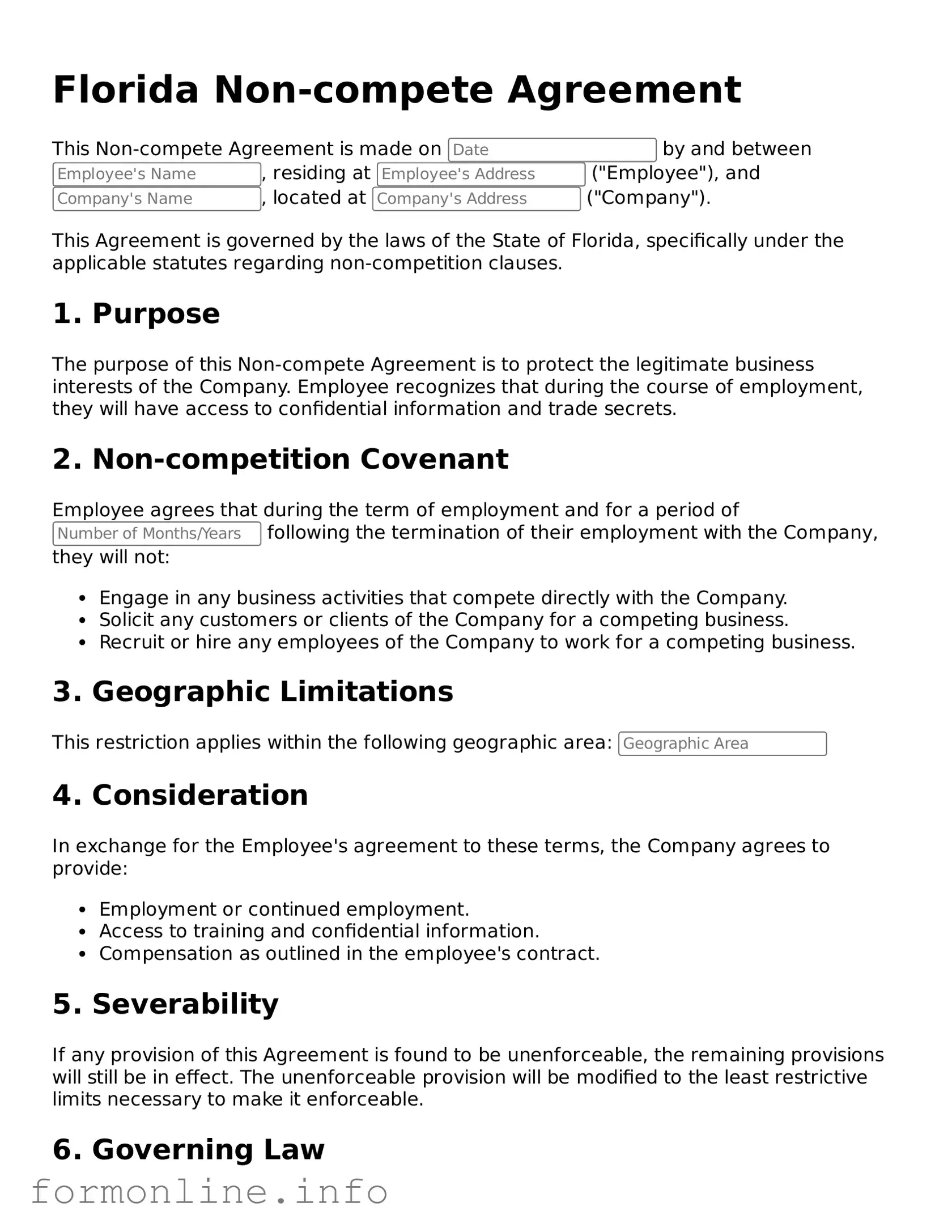Free Non-compete Agreement Template for Florida State
A Florida Non-compete Agreement form is a legal document designed to restrict an employee's ability to work for competitors after leaving a job. This agreement aims to protect a business's interests by preventing the sharing of sensitive information and trade secrets. Understanding the nuances of this form is crucial for both employers and employees; take action by filling out the form below.
Prepare Form Online
